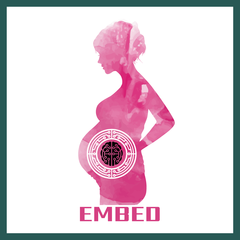Passive smoke intake by pregnant women may have detrimental effects such as spontaneous abortion, lower birth weight, stillbirth, and reduced infant lung function. To extend our knowledge on molecular effects of tobacco smoke exposure in pregnancy, we analyzed transcriptome alterations in passive smokers (PS) and compared them to those in active smokers (AS). Using Illumina Expression Beadchip with 24,526 transcript probes, gene expression patterns were assayed in placentas from PS (N=25) exposed to environmental tobacco smoke (ETS) throughout pregnancy and non-exposed (NS) counterparts (N=35), and in cord blood cells from their newborns. The ETS exposure was evaluated by questionnaire disclosure and cotinine measurement in maternal and cord bloods. A total of 196 genes were significantly deregulated in placentas of PS compared to NS. These genes were primary associated with extracellular matrix, apoptosis, blood clotting, response to stress, embryonic morphogenesis, and lipid metabolism. Cord blood of newborns of PS displayed differential expression of 116 genes encoding mainly neuronal factors, regulators of immunologic response, and protooncogenes. Gene ontology analyses highlighted some important biological processes that might be associated with placental insufficiency and fetal growth restriction in PS, such as fatty acid catabolism, coagulation, regulation of growth, and response to steroid hormone stimulus. The study demonstrates that even low dose exposure to ETS during pregnancy leads to the significant deregulation of transcriptional regulation in placental and fetal cells. The data suggest the effect of ETS on the fetus is primary indirect, mediated via deregulation of placental functions. Comparison of PS and AS indicated that ETS exposure and active smoking in pregnancy partly employ the same molecular mechanisms.
A total of 60 women who gave birth to a baby in the Faculty Hospital Motol (Czech Republic) were enrolled into the study approved by the local Institutional Review Board. The participants signed written informed consent and self-reported information on tobacco smoke exposure (type of exposure, number of cigarettes per day, exposure period) and life style during pregnancy (alcohol drinking, diet, area of residency etc.). Further, the women completed the questionnaire on pregnancy/delivery course (complications, diseases, medication, and delivery mode) and newborn characteristics (physical parameters, Apgar score) with the assistance of gynecologist. Only women without any health complications during pregnancy and their newborns without manifestation of pathological abnormalities were included in the study. Based on self-reported tobacco smoke exposure, the women were divided into two groups, non-smokers (NS, N=35) and passive smokers (PS, N=25). Former and active smokers were excluded from the study. Exposure to tobacco smoke was further evaluated by measurement of plasma cotinine levels in maternal peripheral blood and newborn cord blood using radioimmunoassay.
